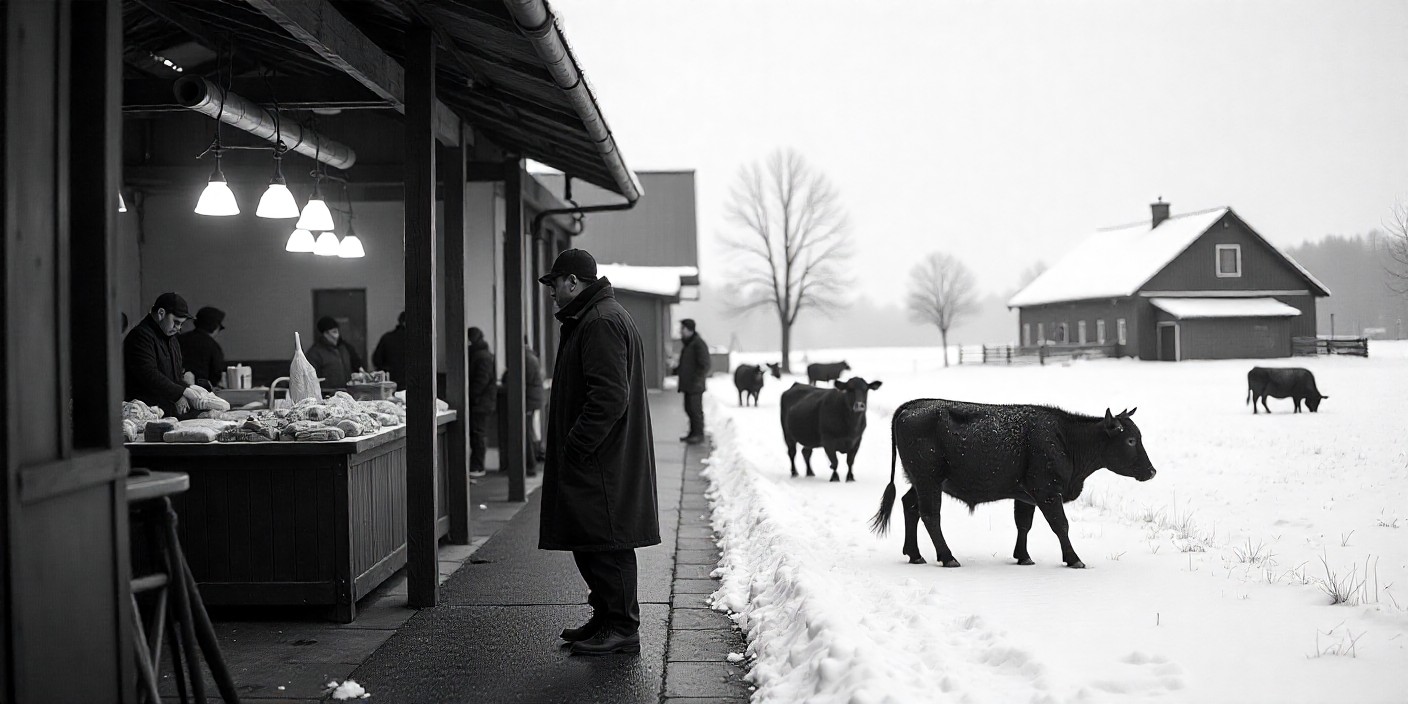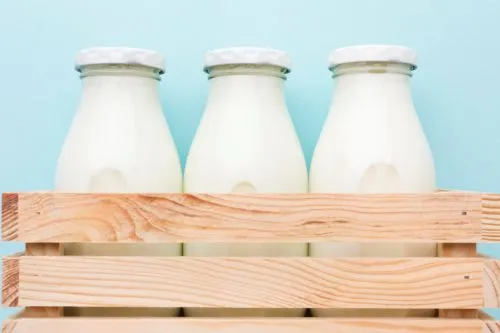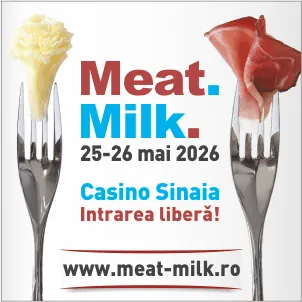3060

The Meat Sector: Strategic for Romania’s Food Security
The meat sector is strategic for Romania’s food security. However, data from the National Institute of Statistics (INS) indicates a sharp divergence: consumption is steadily increasing, while domestic production is stagnating or declining, increasing dependence on imports. This article provides a technical analysis of these dynamics, assessing their impact on prices, farmers, and consumers.
Domestic Production: Species Trends (INS 2024)
According to the INS, Romania’s total meat production in 2024 was:
- Pork: ~419,000 tonnes (–0.5%)
- Beef: ~153,000 tonnes (–6.1%)
- Sheep/goat meat: ~123,000 tonnes (–8.2%)
- Poultry: ~791,000 tonnes (+9.4%)
These figures show a consistent decline in pork and beef production, with poultry being the only sector showing growth.
More specifically, in November 2024, pig slaughter numbers dropped by 9% compared to the previous month, but were still up 5.4% compared to November 2023 (312,000 vs. 296,000 head), generating a monthly output of ~28,434 tonnes (+9.5% year-on-year). Poultry production fell both month-on-month (–9.2%) and year-on-year (–1.05%), while beef recorded declines across the board: –4.6% monthly and –3.4% annually in both meat output and number of slaughters.
Per Capita Consumption Trends
INS data (2010–2020) shows significant increases:
- Average annual meat and meat products consumption rose from ~59.9 kg/person (2010) to ~74.1 kg (2020), peaking at 74.4 kg in 2019 (+12–23%).
- Between 2013 and 2018, consumption grew from 54.4 kg to 76.7 kg, a record for the past 30 years.
Consumption structure in 2020:
- Pork ≈ 37.3 kg/year
- Poultry ≈ 28 kg/year
- Sheep/goat ≈ 2.6 kg/year
- Beef ≈ 5.4 kg/year
By 2023, pork consumption remained dominant at around 37 kg/person/year, while poultry consumption rose slightly (28.2 kg in 2023 vs. 27.5 kg in 2022).
Self-Sufficiency Deficits and Imports
While Romania has surpluses in areas like cereals and eggs, the pork sector suffers from a major deficit. In 2023, the self-sufficiency rate for pork was below 50%, similar to fish and milk.
Imports are rising dramatically. In the first seven months of 2024:
- Pork imports: ~€500 million
- Exports: just ~€1.2 million
- Total food trade deficit: over €2.5 billion
In 2023, Romania imported food worth €10.8 billion, representing nearly 10% of total national imports.
Causes of the Production–Consumption Gap
Pork and beef production are affected by African swine fever, rising costs, and sanitary and logistical challenges. The increase in consumption is driven by higher incomes and consumer preference for meat, particularly affordable white meat (poultry). The 2015 VAT reduction on food (~9%) stimulated consumption, but not efficient domestic production, which failed to meet growing demand.
Strategic Impact and Recommendations
For farmers and local industry:
- Increase efficiency across the production chain (biosecurity, genetics, digitalization) to reduce losses and health costs.
- Access EU funding for breeding and local processing farms.
For policymakers:
- Economic incentives for farmers, including those raising cattle and sheep.
- Policies to reduce import dependence: infrastructure and logistics support.
For consumers:
- Clear information about meat origin, transparent labeling, and promotion of the benefits of locally sourced products.
Conclusion
Romania faces a food paradox: meat consumption continues to rise (indicating a dynamic domestic market), but local production—especially pork and beef—cannot keep pace. Massive imports have become inevitable, creating a food security deficit. Structural change through active policies, investment, and consumer education is essential to restore balance.
(Photo: Freepik)




